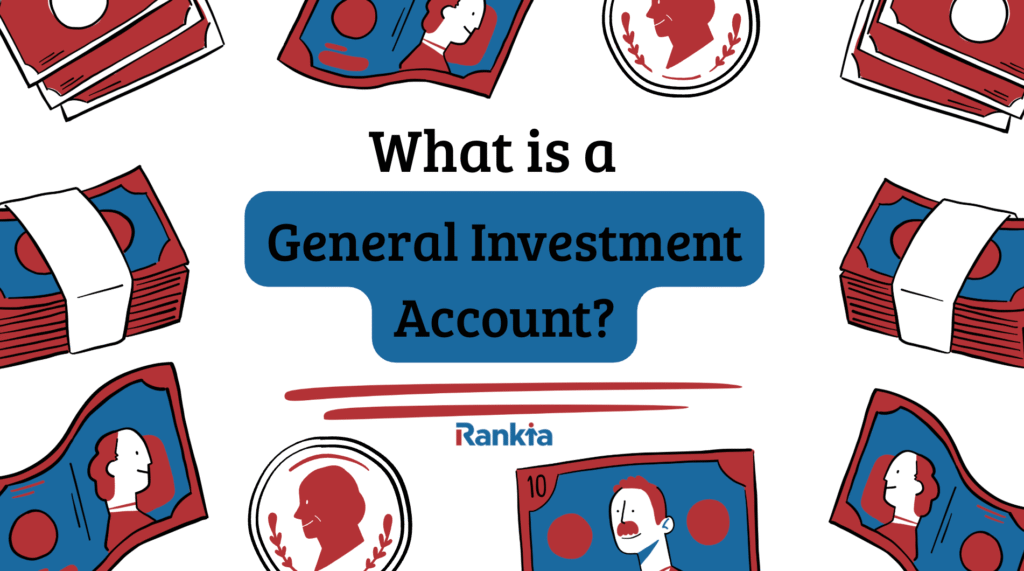Definitions
What Is a General Investment Account (GIA)?

A General Investment Account (GIA) is a flexible investment account available to UK residents that allows you to invest in a wide range of assets without the constraints of contribution limits or tax-free allowances, as seen in other wrappers like ISAs or pensions. When comparing a general investment account vs ISA, the key difference lies in tax treatment—GIAs don’t offer tax-free growth or income, but they provide unlimited contributions and greater flexibility. As a result, GIAs are often used by individuals who have already maxed out their annual ISA allowances or want fewer restrictions on how much they invest.

Key Features of a GIA
- No Contribution Limits
There is no upper limit to how much you can deposit into a GIA. This makes it ideal for investors with large sums to invest, particularly those who have already used up their ISA allowance. - Flexible Access
You can withdraw funds at any time without incurring penalties. There are also no restrictions on how long you need to keep your investments in the account. - Wide Range of Investment Options
GIAs typically allow you to invest in:- UK and international shares
- Mutual funds
- Exchange-traded funds (ETFs)
- Bonds
- Investment trusts
- No Upfront Tax Relief or Tax Shield
Unlike pensions or ISAs, GIAs don’t offer any immediate tax advantages. This means gains, dividends, and interest earned may be subject to tax.
What are the main benefits?
A General Investment Account (GIA) offers flexibility and simplicity. There are no contribution limits, no withdrawal restrictions, and you can invest in a wide range of assets—from stocks and funds to bonds and ETFs. GIAs are ideal for those who want to invest beyond the annual ISA allowance or prefer a straightforward way to access the markets without account-specific rules.
Tax Considerations
While GIAs are easy to open and manage, investors should be mindful of the tax implications:
- Capital Gains Tax (CGT)
Any profit you make when selling an investment could be subject to CGT. For the 2025/2026 tax year, the annual CGT allowance is £3,000. Gains above this threshold are taxed at:- 18% for basic-rate taxpayers
- 24% for higher- and additional-rate taxpayers
- Dividend Tax
If your GIA investments pay dividends, you’ll pay tax on any amount exceeding the £500 dividend allowance (2025/2026). The dividend tax rates are:- 8.75% (basic rate)
- 33.75% (higher rate)
- 39.35% (additional rate)
- Interest Income
Interest from bonds or cash held in a GIA may be taxed above your personal savings allowance.
Note: All tax treatment depends on individual circumstances and current legislation, which may change. It's advisable to consult a financial adviser or tax professional.
Is there an investment limit?
No. Unlike ISAs, which are capped at £20,000 per tax year (2025/26), GIAs have no contribution limits. You can invest as much as you like, whenever you like. This makes them a popular choice for investors who have maxed out their ISA contributions or want to invest larger sums.
How to Open a GIA
Opening a GIA is relatively simple and can be done through most UK investment platforms, banks, or wealth managers. You’ll typically need to:
- Provide identification and proof of address
- Choose your investments
- Set up regular or lump-sum contributions
When considering major providers for GIAs, Vanguard stands out, and our Vanguard review offers a closer look at its varying fees and investment options. Similarly, AJ Bell provides diverse choices, examined in our AJ Bell review, while Hargreaves Lansdown's offerings are also available, covered in our Hargreaves Lansdown review.
When Should You Use a GIA?
A GIA might be the right choice if:
- You've already used your full ISA allowance
- You want unlimited flexibility in how much you invest
- You're comfortable managing tax liabilities on dividends and capital gains
- You're saving or investing for goals that don’t require tax shelters
Final Thoughts
A General Investment Account offers broad flexibility and access to a wide array of investment options, but it comes without the tax advantages found in ISAs and pensions. For many investors—especially those who have maximised their tax-efficient options—a GIA is a practical way to continue building wealth. Just be mindful of tax implications, and consider seeking professional advice to manage your account effectively.
FAQs
Can I open more than one General Investment Account?
Yes, you can open multiple GIAs with different providers. There are no legal restrictions on how many you can hold.
Do I have to pay tax on gains in a GIA?
Yes. Unlike ISAs, GIAs are subject to Capital Gains Tax (CGT) and dividend tax. However, you can offset some gains using your annual CGT and dividend allowances.
What happens to my GIA when I die?
GIAs form part of your estate and may be subject to inheritance tax. The account is usually frozen until probate is granted and then transferred to beneficiaries.
Can I transfer my GIA to an ISA?
Not directly. However, you can sell assets within your GIA and repurchase them in an ISA (known as a 'Bed and ISA' strategy). Be mindful of CGT on gains when doing this.
Is there a minimum amount needed to open a GIA?
Minimum investment requirements vary by provider. Some platforms let you start with as little as £1, while others may require £500 or more.
Is a GIA suitable for long-term investing?
Yes, GIAs are suitable for long-term goals like retirement or wealth building—especially once you've used your annual ISA allowance.
Do GIAs come with any protection?
Yes. Most providers are covered by the Financial Services Compensation Scheme (FSCS), offering protection up to £85,000 per firm if the provider fails.
Can I hold cash in a GIA?
Yes, but cash balances in a GIA won't earn much interest and may be subject to tax. It’s generally more effective to invest that cash within the account.